21.10.19 - In Newfoundland, Daniels students learn to design from a rural perspective
Sessional Lecturer Matthew Brown has deep roots in Newfoundland. "My mother's side is from St. John's," he says, "and my father's side is from Fogo Island, from a small fishing community called Joe Batt's Arm."
In 2013, Joe Batt's Arm became an unlikely tourist destination when the Fogo Island Inn, a strikingly modern, 29-room boutique hotel designed by architect Todd Saunders, opened for business. Guests pay a minimum of $1,975 per night to experience life on a rocky outcropping steps from the frigid North Atlantic. The inn is an initiative of Shorefast, a charitable organization whose mission is to build cultural and economic resilience on Fogo Island — which, like other Newfoundland communities, has never entirely recovered from the collapse of the local cod fishery in the early 1990s.
The inn, along with other Shorefast projects, has transformed Fogo from an obscure "outport" town into the type of place Gwyneth Paltrow would visit and then recommend to her Instagram followers. (Yes, that actually happened.)
For his 2019 option studio, Brown and his co-instructor Sandra Cooke (who is also his business partner at Brackish Design) led third-year graduate students on a trip to Newfoundland, where they had opportunities to explore ways of using design to achieve similar economic revivals in other, less heralded outport communities. Brown and Cooke built on the success of their 2018 option studio, which covered the same topic and territory, by taking students on a whirlwind tour, first to a design symposium at Memorial University; then to Newtown, a coastal community south of Fogo Island; and finally to Fogo Island itself, where they toured the inn and listened to a lecture by Zita Cobb, the former tech executive who founded Shorefast.
Throughout the trip, students met and spoke with Newfoundland residents to gather information about the area's landscape and lifestyle. They'll use that local knowledge to produce studio projects that address Newfoundland's unique economic and ecological challenges.
Here's a look at how the trip to Newfoundland unfolded, with commentary from Brown.
"Before I arrived, the students had three days to explore," Brown says. "This is Torbay, an outport community that four or five of them visited."
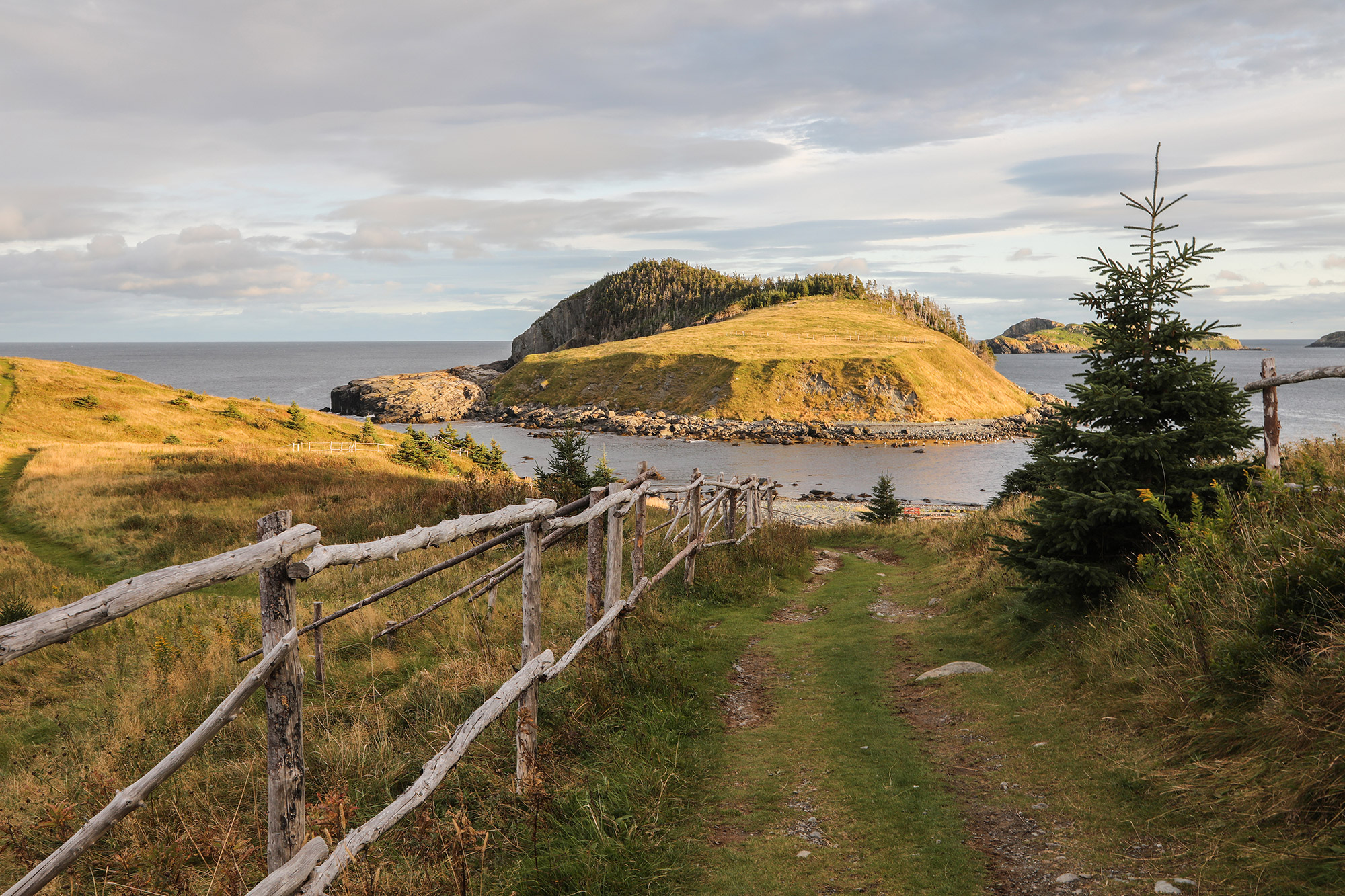
"This was the kick-off to the trip. All of the students attended a design symposium at Memorial University, where I was speaking. I presented both my own research and some of the work from last year's option studio, so that people in Newfoundland could understand what we were trying to achieve. Pretty much everyone involved in design in Newfoundland was at this symposium: the director of the Harris Centre at Memorial University, people from Woodford Sheppard Architecture, as well as Jerry Dick, who is executive director of the Heritage Foundation of Newfoundland and Labrador. It was a great conversation about what's happening in design in these rural places. It's great that students had the opportunity to take part in that conversation."
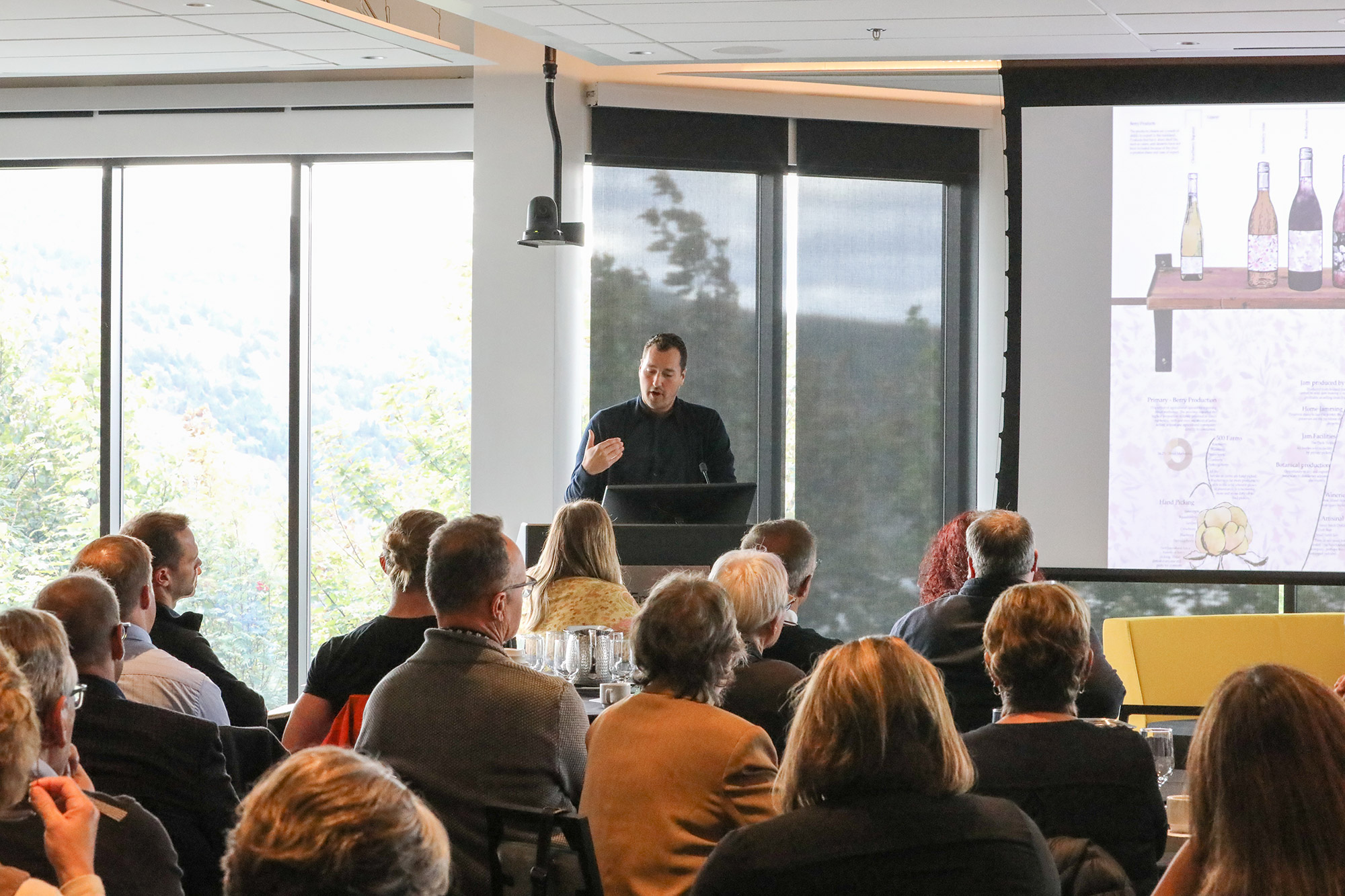
"This shot was taken with a drone. You can see Newtown and how it's basically built on flat rock. It used to be called the Venice of Newfoundland because it's all these tiny islands. Now they're connected with bridges, but for a long time the waterways — known in Newfoundland as "tickles" — were the roads. Paved roads weren't introduced until after Newfoundland joined Canada in 1949. They changed how people moved around the community."
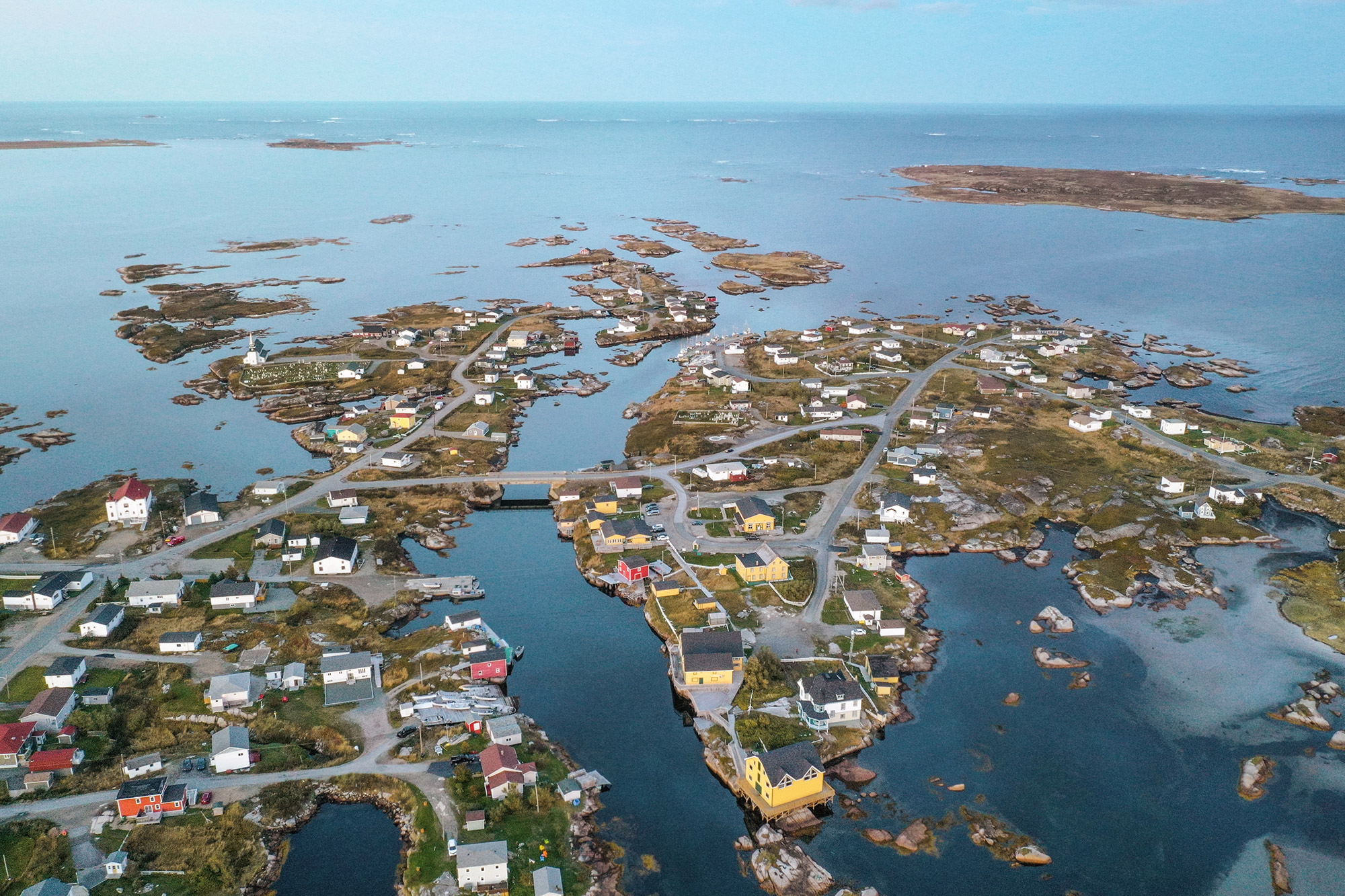
"This is the Barbour Living Heritage Village. It's a not-for-profit, and one of the key historic assets of the community of Newtown. They're the organization that hosted the students. The students stayed on the premises and ate all their meals here. The boys stayed in that yellow house next to the red building, and the girls stayed in a separate house on the other side of the tickle."

"Just as you enter Newtown, you see St. Luke's Anglican Church. It's one of the landmarks in the community, and probably one of the more photographed churches in Newfoundland."

"All the students were 'screeched in,' which is a kind of ceremony that Newfoundlanders do to initiate come-from-aways. It's filled with humour. There's a recitation, and then participants have to kiss a cod and take a shot of screech, which is a pretty harsh Newfoundland rum. The students did that and then they were honourary Newfoundlanders, which the community loved."
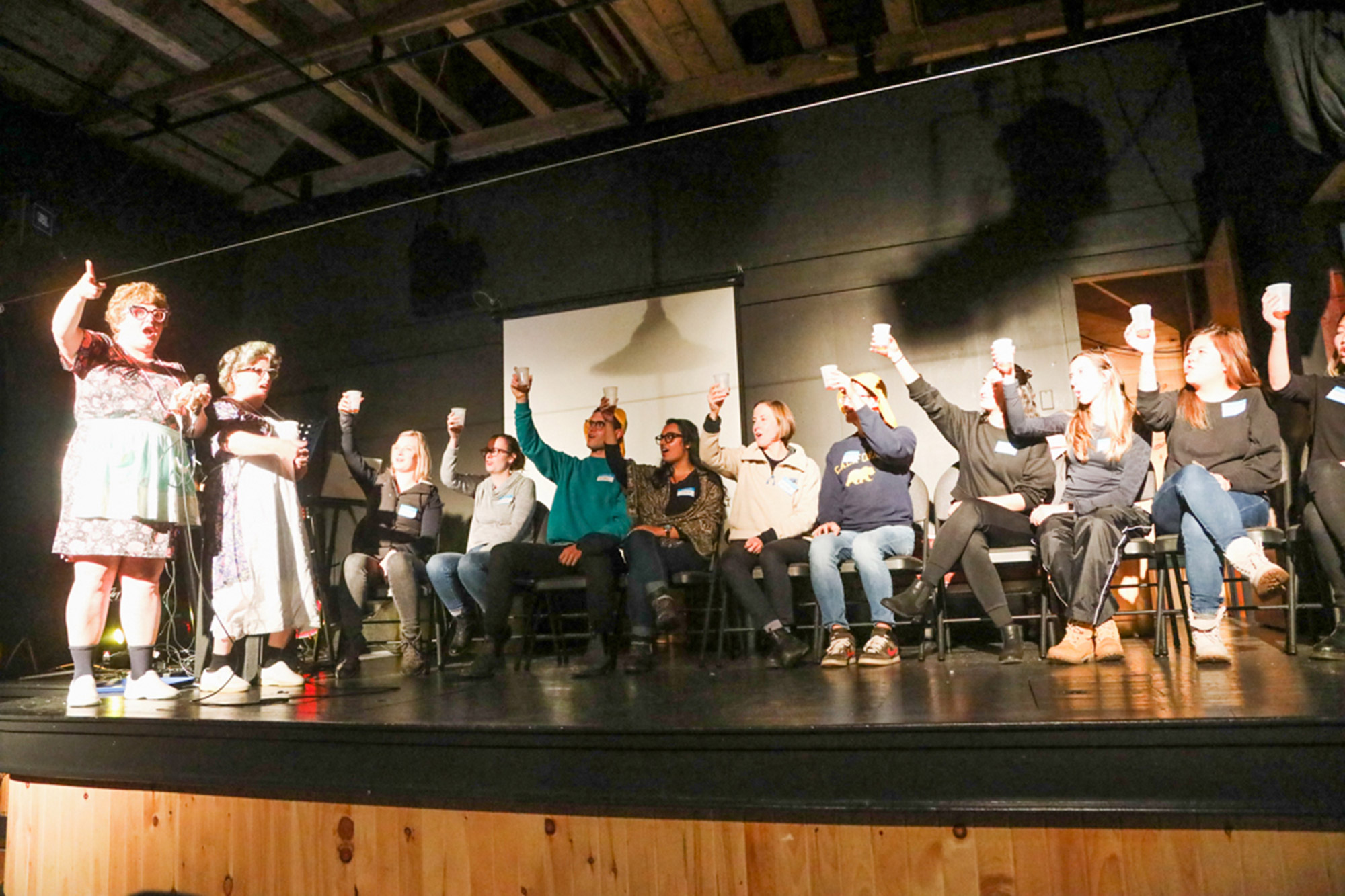
"We invited the local community to Barbour Living Heritage Village. We had printed large-format maps of Newtown, as well as the surrounding region. We sat them down and workshopped with them for two hours. These very personal conversations often directly influence the students' studio projects, because they're getting local knowledge to help them figure out how to move forward."
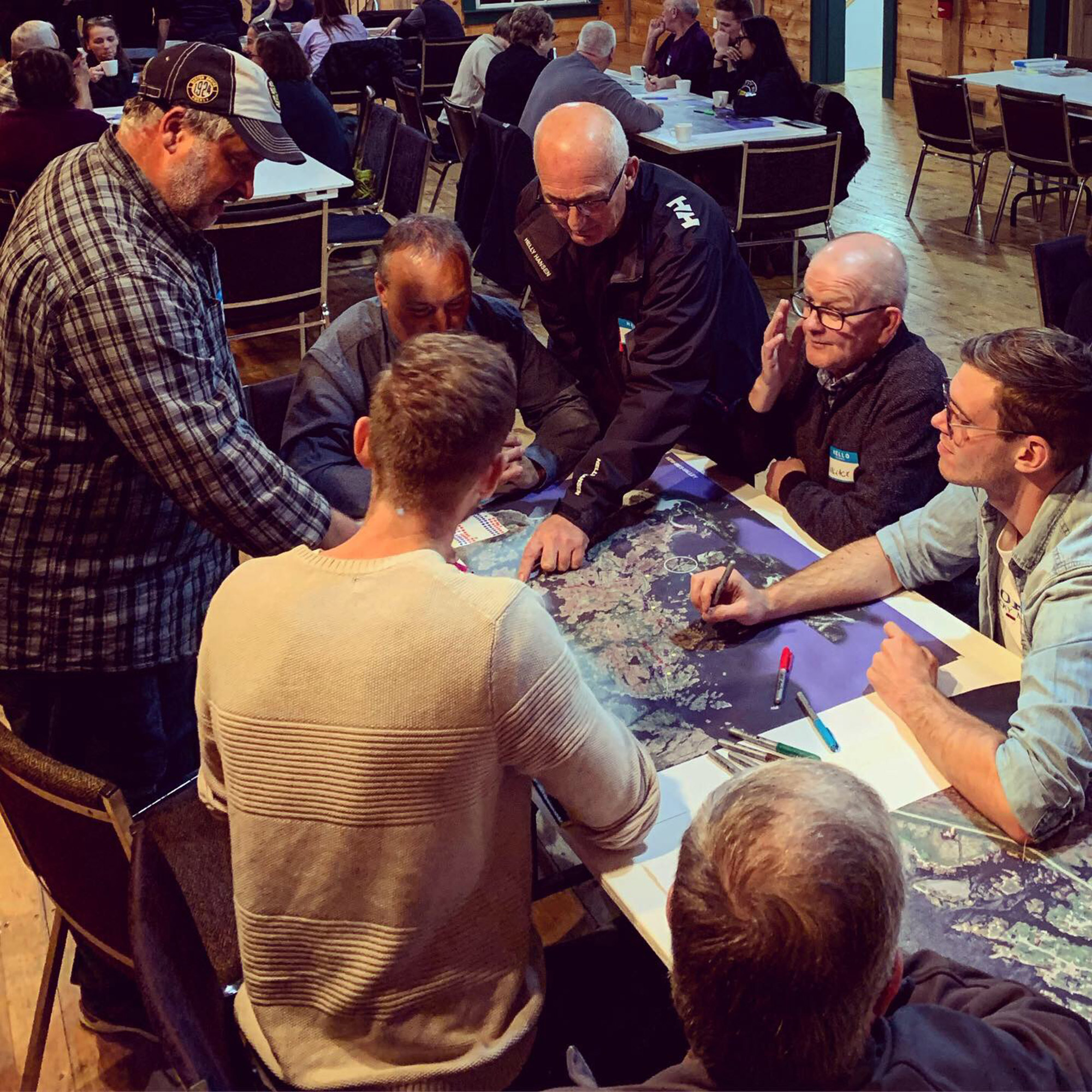
"This is Michal Wideman, a landscape architecture student, picking berries. This stemmed from a visit he and three other students paid to a 94-year-old lady named Mildred who lives in Newtown. They sat for a couple of hours and she told them stories about the landscape and where they could find the specific berries that she used to pick. So they went and picked her favourite berry and returned later that evening with a bucket for her, which I thought was a nice gesture. But more importantly, they were learning about the landscape in ways that they would never be able to do from maps."
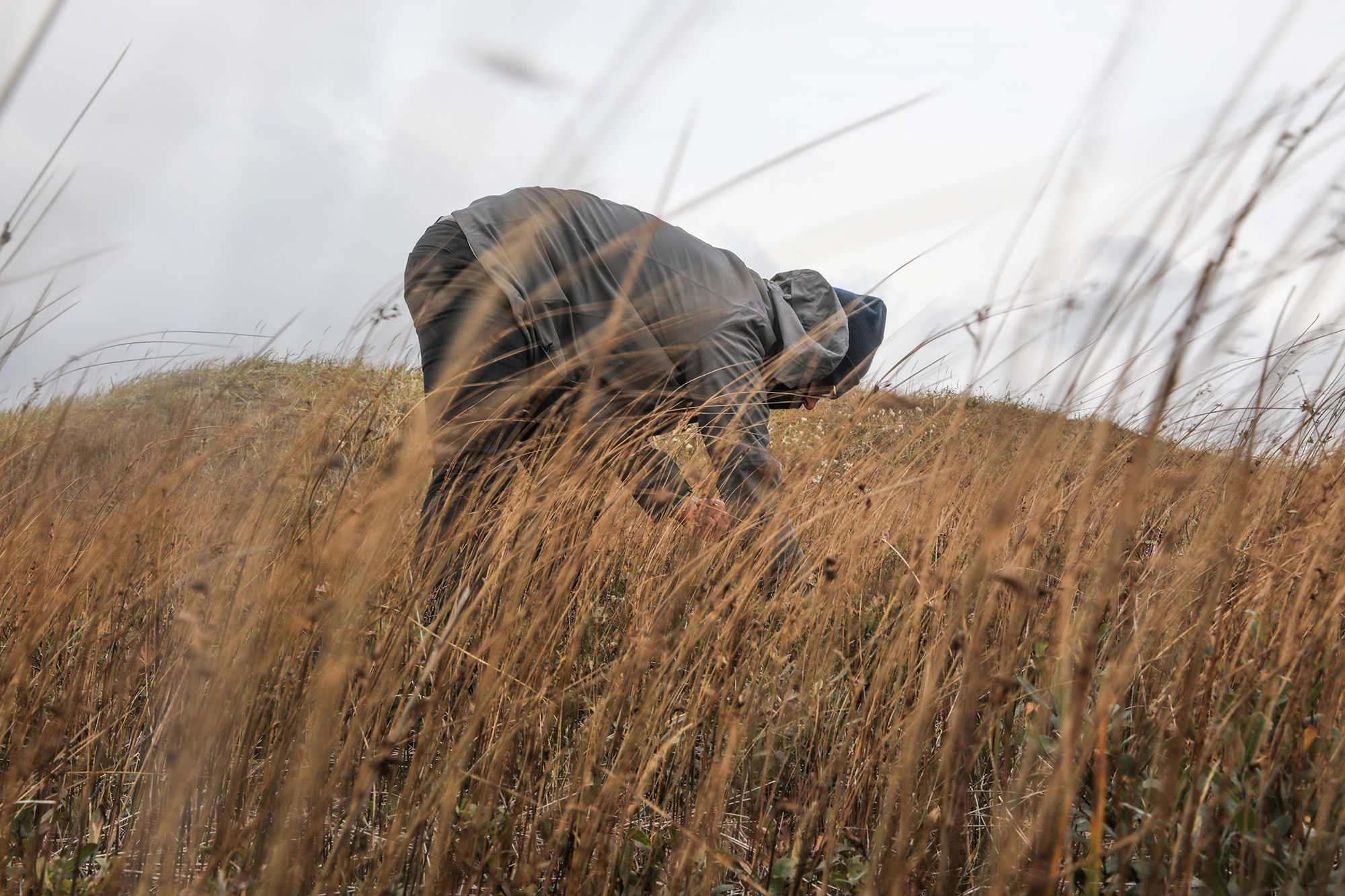
"That's Terry. He's the husband of Judy Stagg, the executive director of Barbour Living Heritage Village. He took us out in his small boat. We went through the tickles and around some of the smaller islands."

"This is Judy and Terry's backyard. As soon as the students understood that Terry was cultivating his land for growing potatoes and other things, they really wanted to see — because food security is a huge topic on the island of Newfoundland. Most of the island's food is imported. Here, students are helping Terry pull up potatoes in his garden and learning from him."
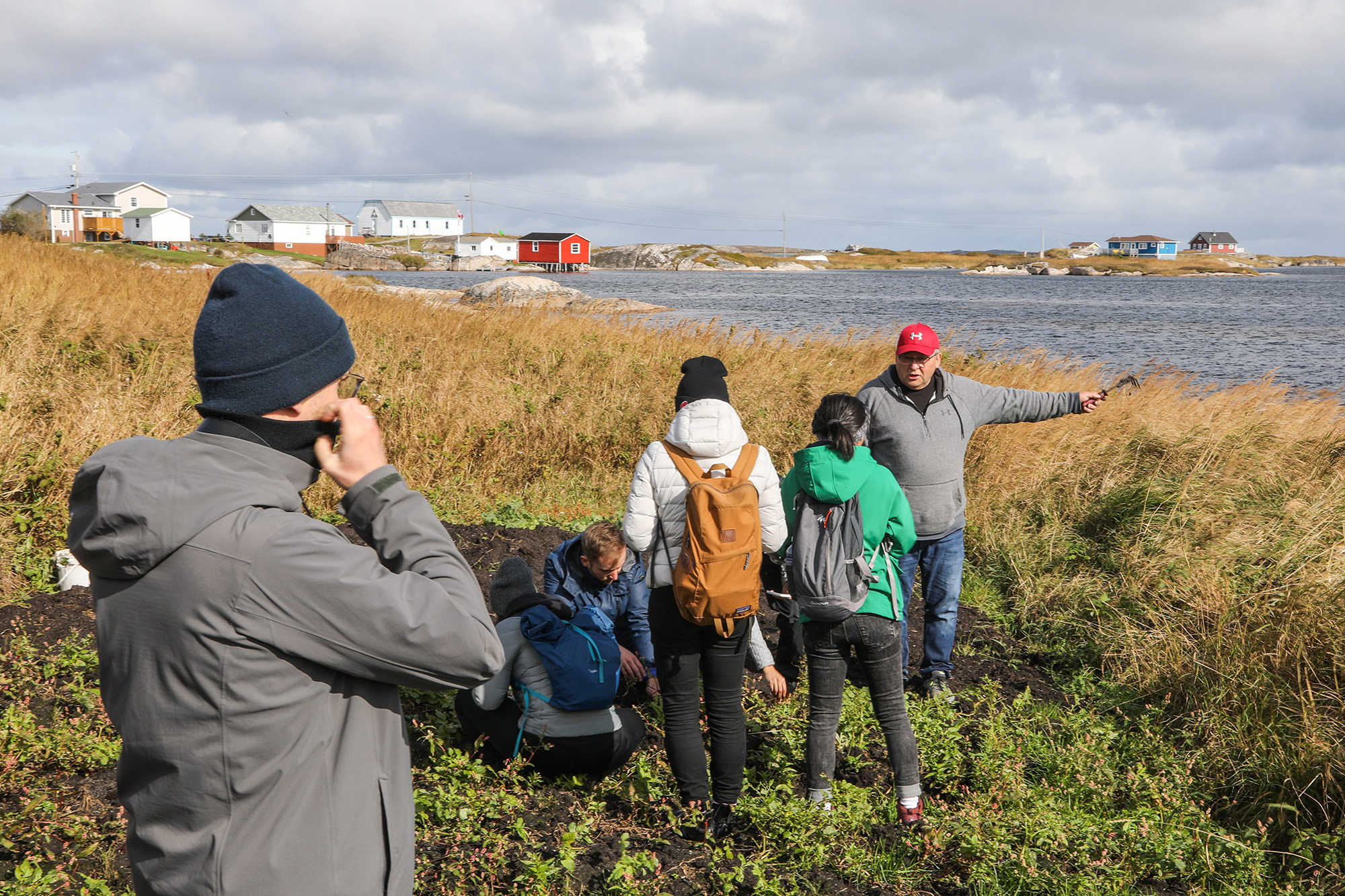
"This is the Fogo Island Inn, located in Joe Batt's Arm, on Fogo Island. It's a 29-room inn, and it's a social enterprise. Money from the inn goes into the Shorefast organization, a registered charity that does economic development work on the island. The inn is quite an interesting structure. It works because of the landscape. If it were anywhere else it wouldn't have the same drama."

"The founder of Shorefast and the Fogo Island Inn is Zita Cobb. She gave a lecture to the students for about two hours in the theatre of the inn, where she explained her vision and how she has actually been able to accomplish that on the island."

"The Shorefast organization also runs an artist-in-residence program. There are four studios all around Fogo Island. This one is called Tower Studio, and it's located in Shoal Bay. Looking at it, you can really get a sense of what contemporary design can do to enhance the local landscape. The students went in and talked to the current artist in residence."

"This is my great grandfather's house on Fogo Island. It's still in my family — my dad's cousin owns it — but nobody has lived in it for years. It has always been there, and it's a staple of our family. I was able to walk students through how the landscape used to work. Within the crevices of the rocks and the soil pockets were gardens that led down to the fishing stages, where my great grandfather would tie his nets."
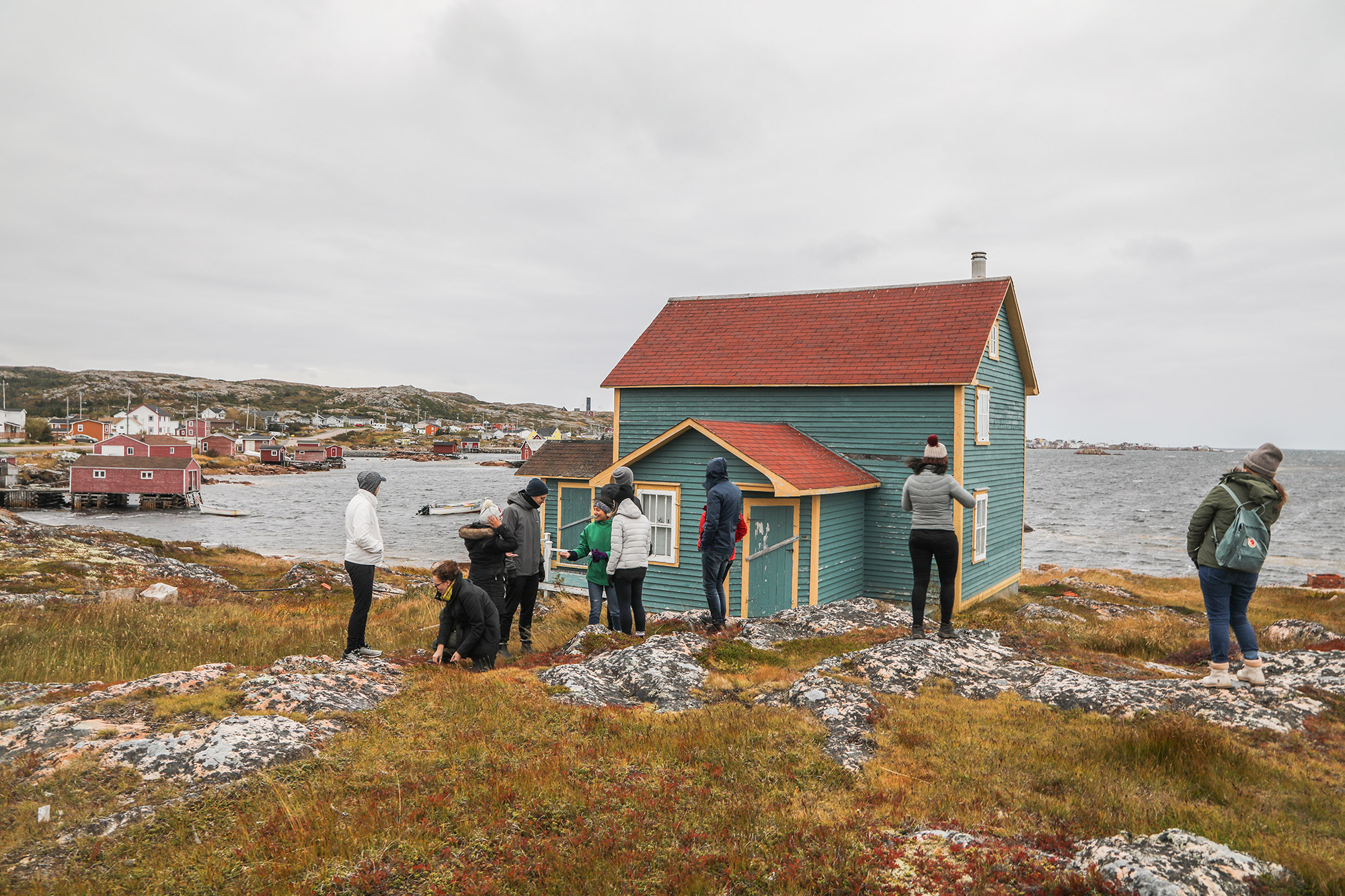
Photographs by Dimana Kolarova.

